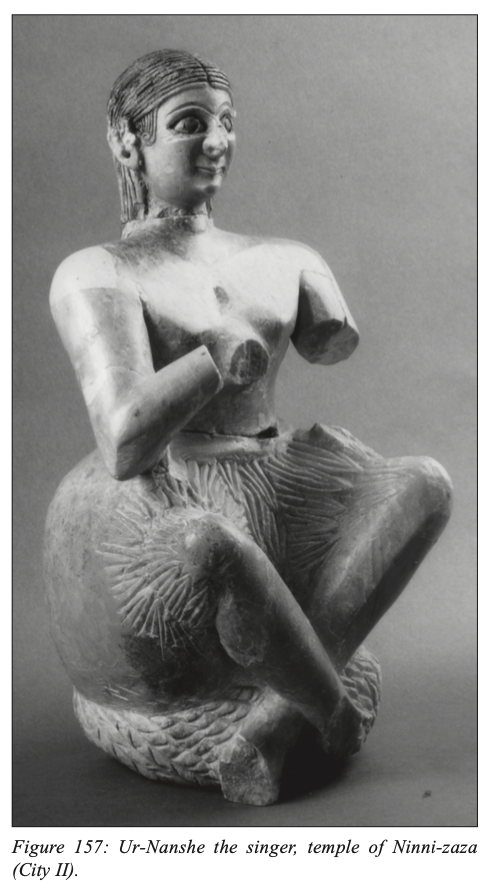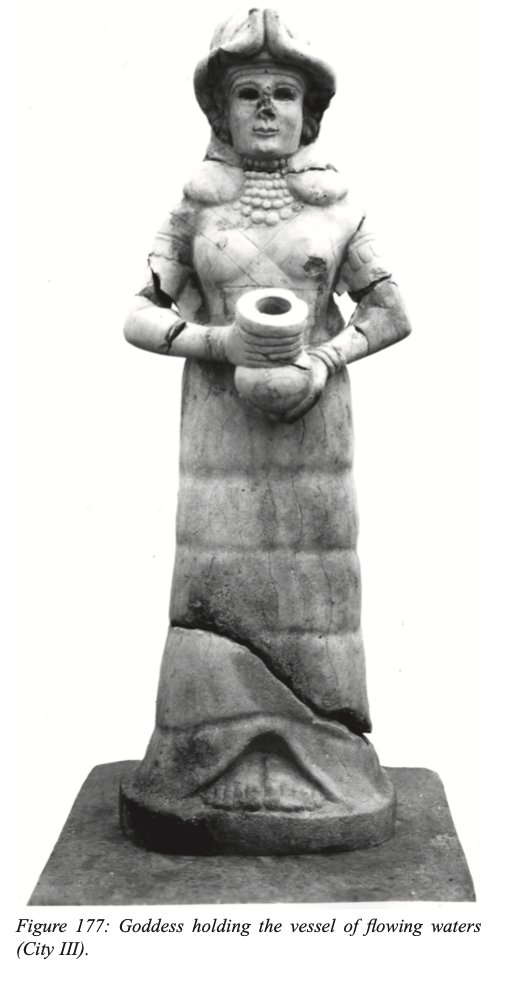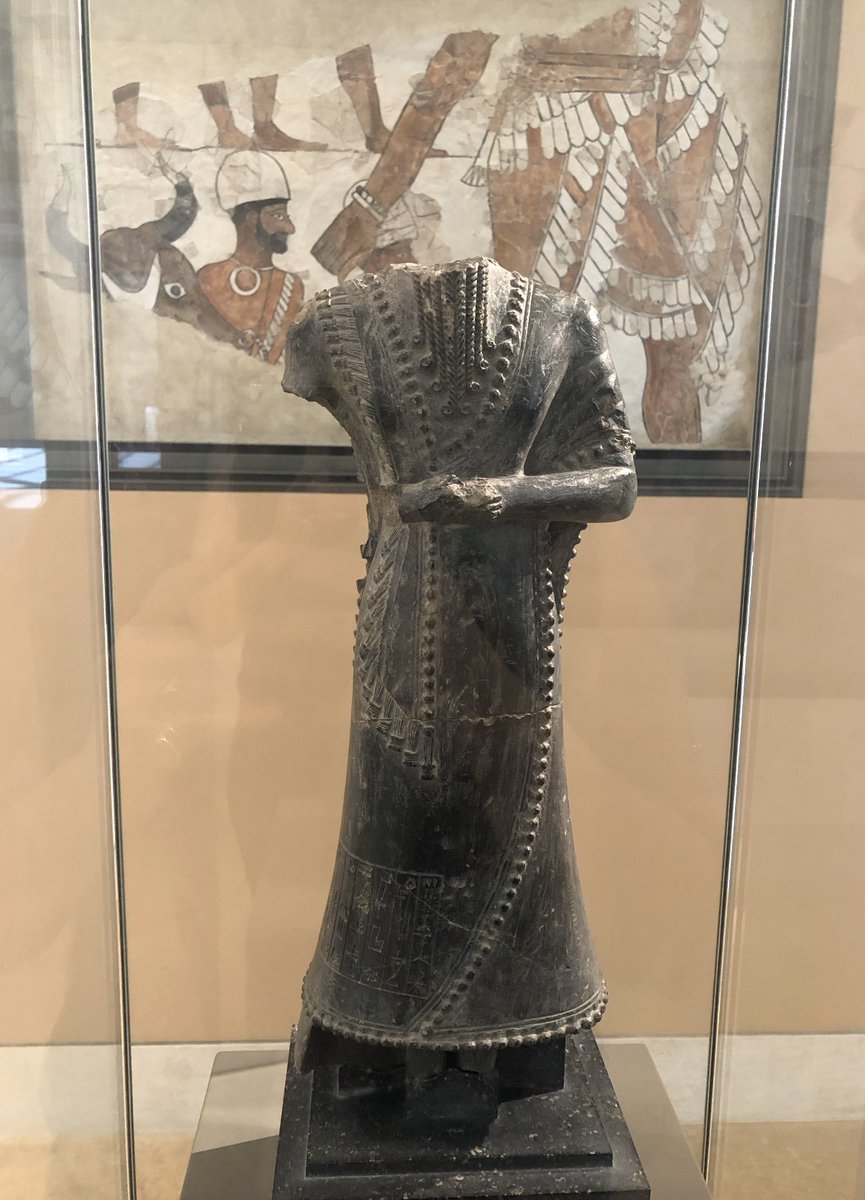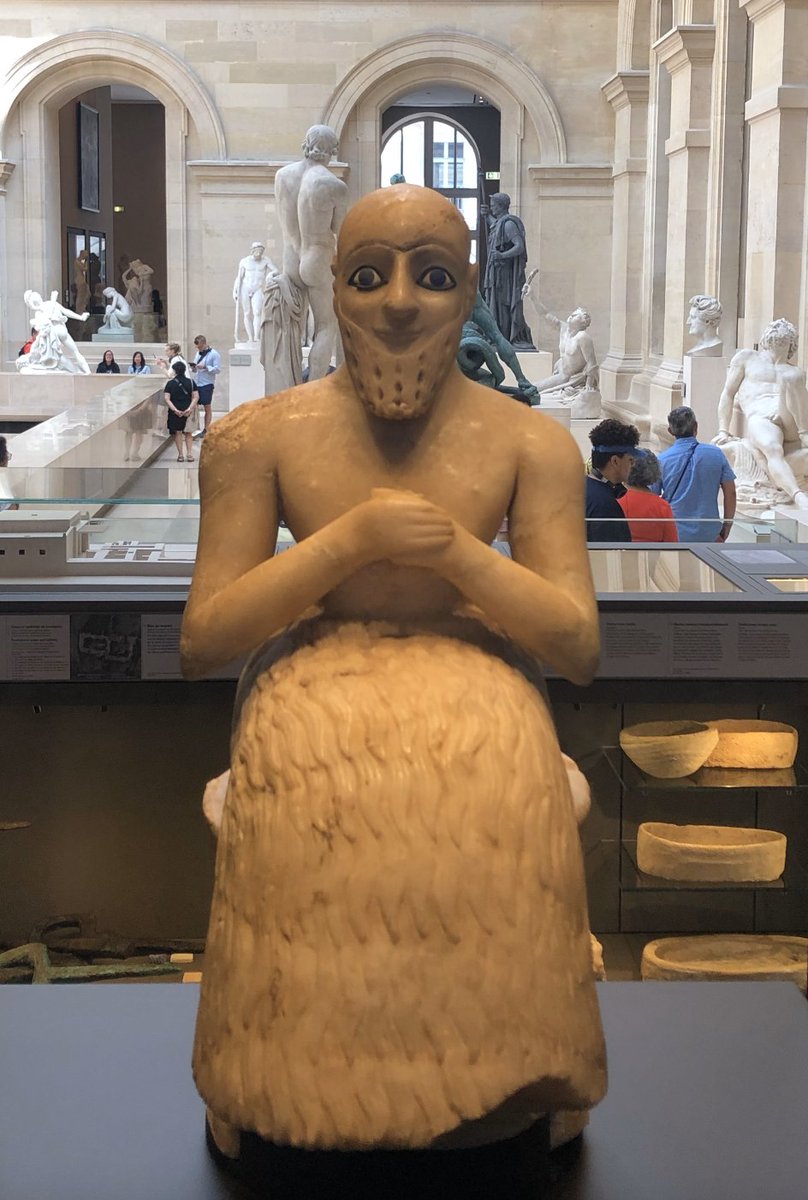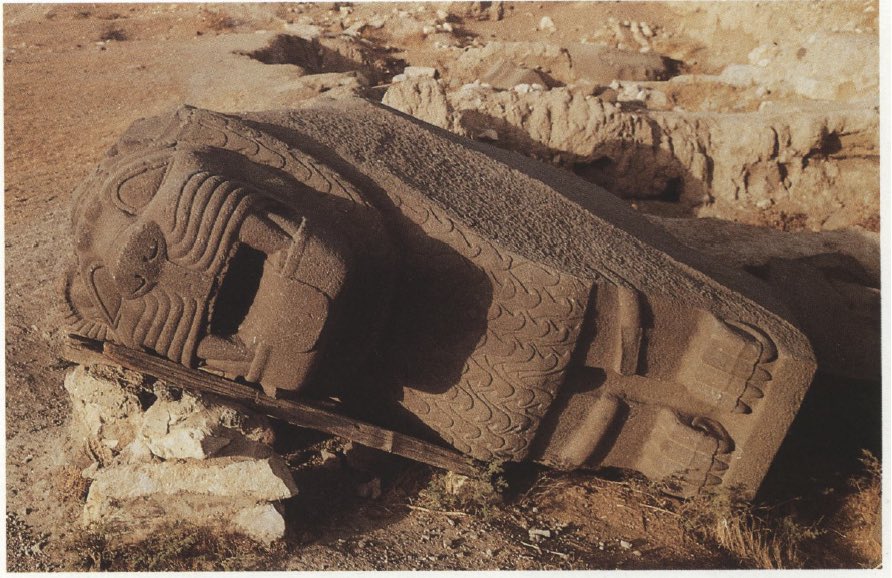
1/ LONG ARCHEO THREAD ON MARI - Tell Hariri.
After being reminded of the horrifying state of the site of Tell Hariri, ancient Mari, earlier today, I decided to dedicate a (humble) thread summarizing its history and its most important artistic features. Here goes:
After being reminded of the horrifying state of the site of Tell Hariri, ancient Mari, earlier today, I decided to dedicate a (humble) thread summarizing its history and its most important artistic features. Here goes:
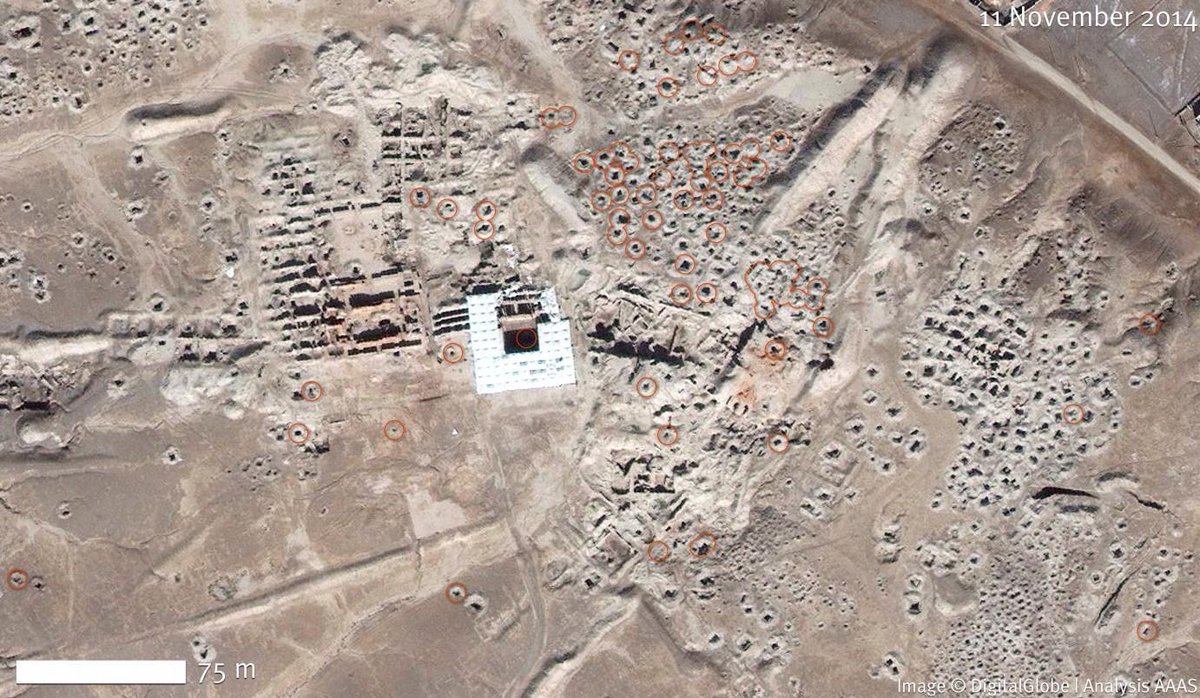
2/ Mari is the name of an ancient Syrian kingdom whose existence spanned between 2950 and 1760 BCE. Today, it is known as Tell Hariri, and constitutes a now low-lying mound bordering Syria and Iraq along the valley of the river Euphrates.
Below: aerial photo of Mari, 1935
Below: aerial photo of Mari, 1935
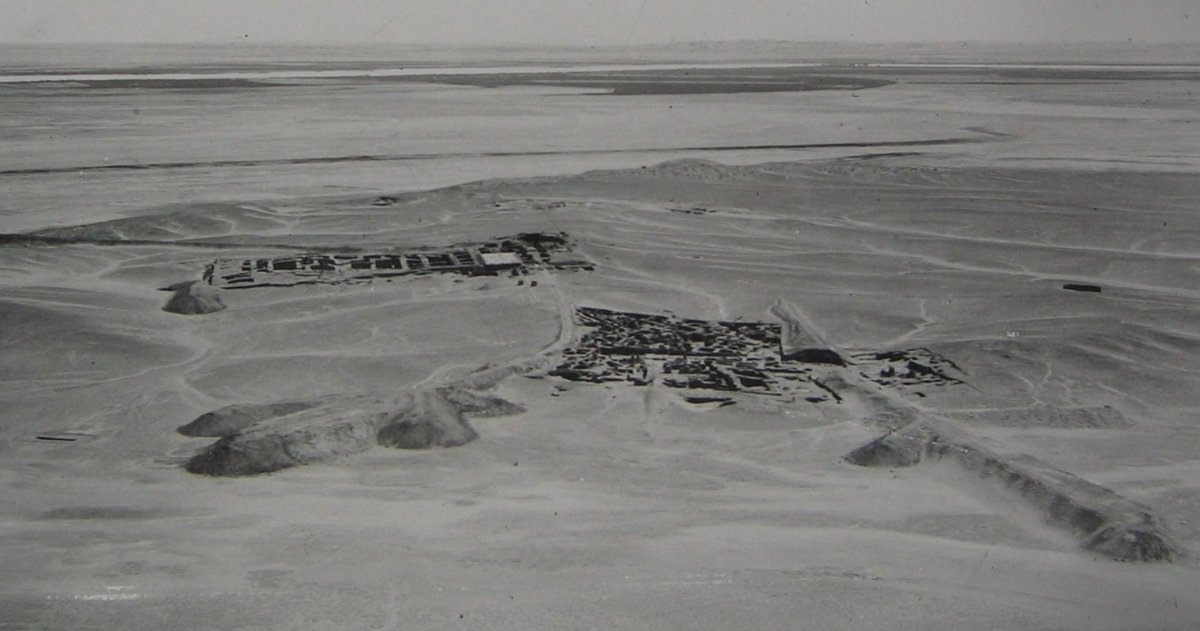
3/ Because it was nestled well in the valley of the Euphrates, away from the main trade and travel routes, also being situated some 120 km south of the Syrian city of Deir ez-Zor, Tell Hariri was hardly explored let alone pinpointed as a potential archaeological site. 
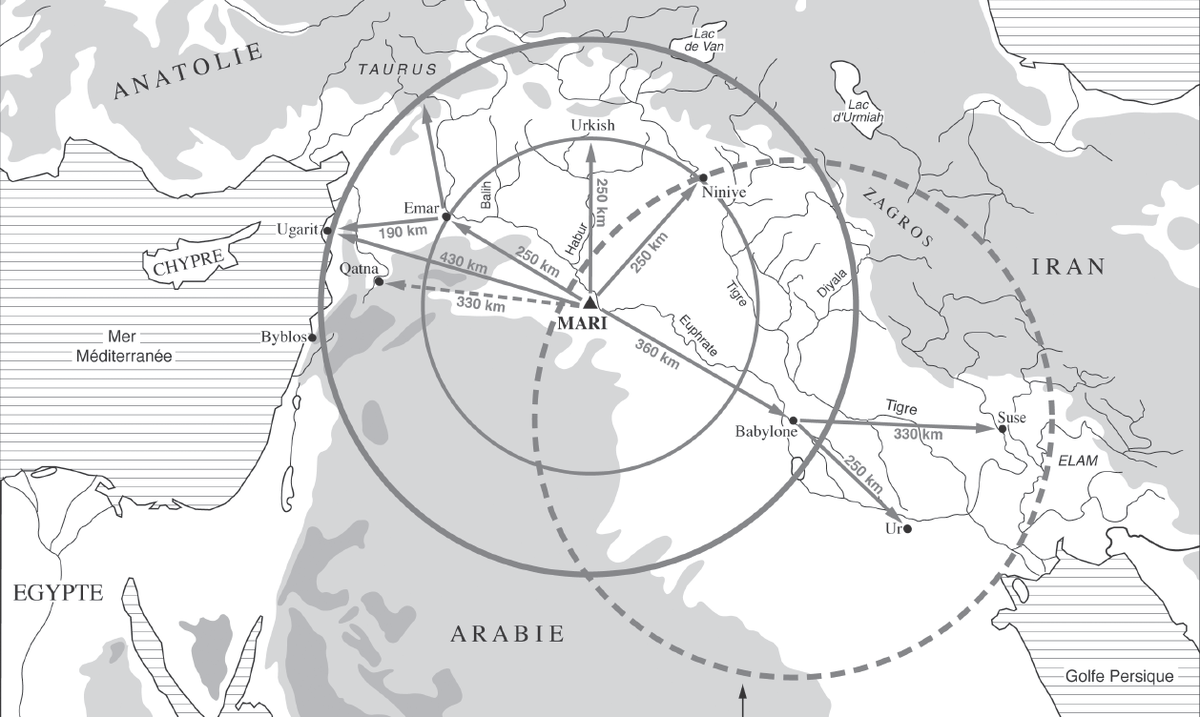
4/ In 1933, a group of Bedouins chanced by a statue fragment from the mound's vicinity, and news of this discovery naturally crossed the ears of the French commanders posted in the area.
Below: some fragments of votive sculptures. Louvre.
Below: some fragments of votive sculptures. Louvre.
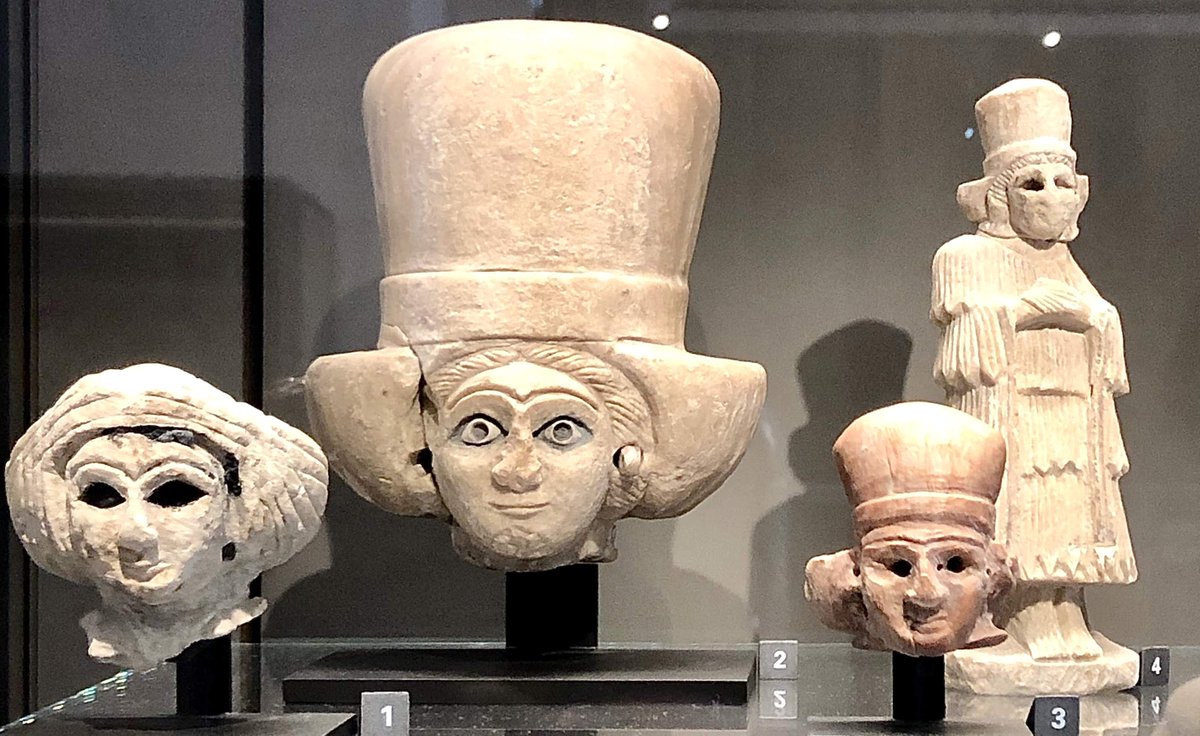
5/ Since news of potential archaeological discoveries traveled fast back in those days, word eventually reached R. Dussaud, the keeper of Oriental Antiquities at the Louvre, who in turn assigned André Parrot the task of identifying the mound through conducting a test trench. 
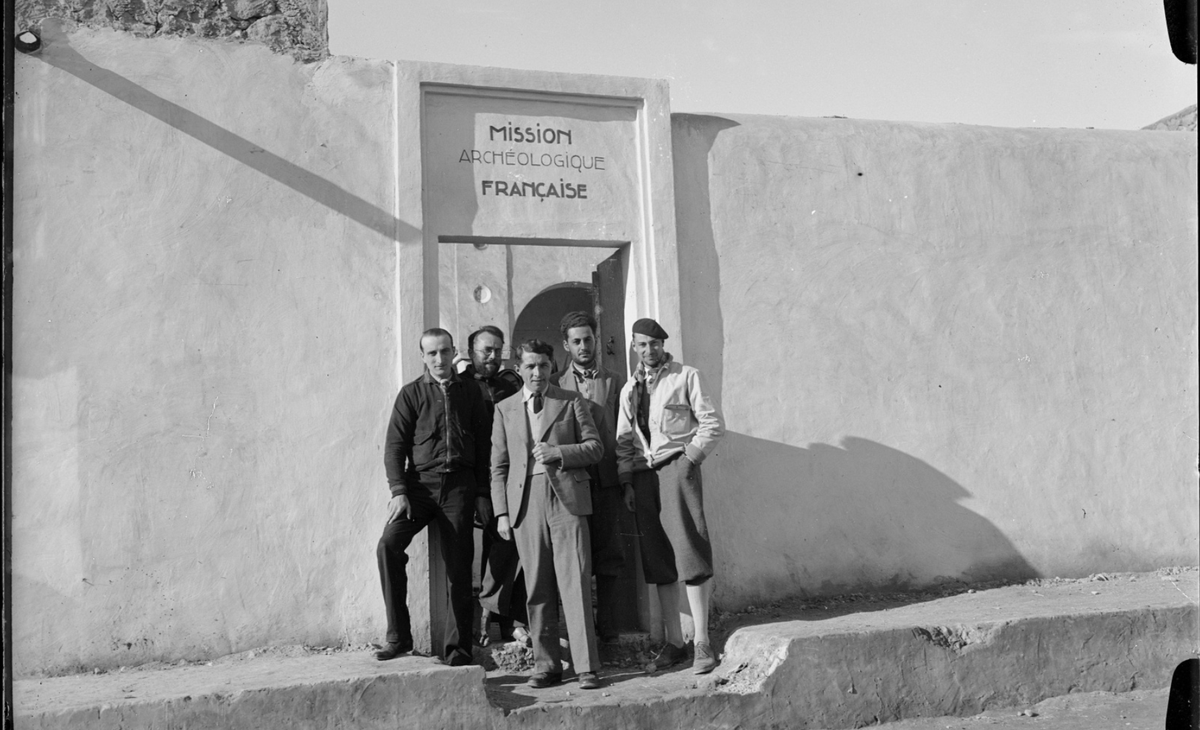
6/ By December of 1933, Parrot was already excavating at the site, and on January of 1934, a series of excavated inscribed royal statuettes resulted in confirming the mound as the site of ancient Mari. 
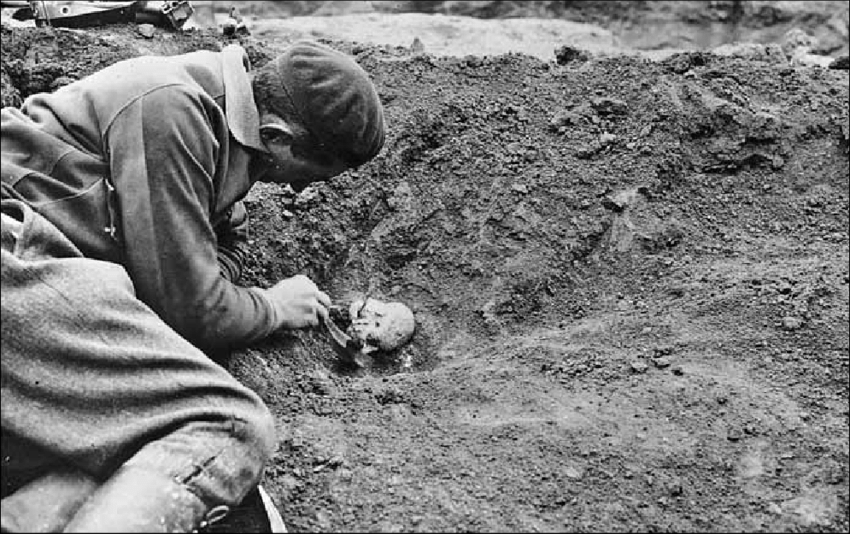
7/ Since 1933, excavation at Mari carried on with a few years' interruptions and have so far totaled more than 40 annual seasons. Unfortunately, work at Mari was halted with the advent of the Syrian crisis...
Up next, a (very) concise history of the site:
Up next, a (very) concise history of the site:
8/ Mari I (ca. 2900 BCE) a settlement was newly founded on virgin land. What little was unearthed showed remnants of a complex irrigation system linked to the Euphrates, with a main canal passing through the city. This settlement was all leveled upon the re-foundation of the city 
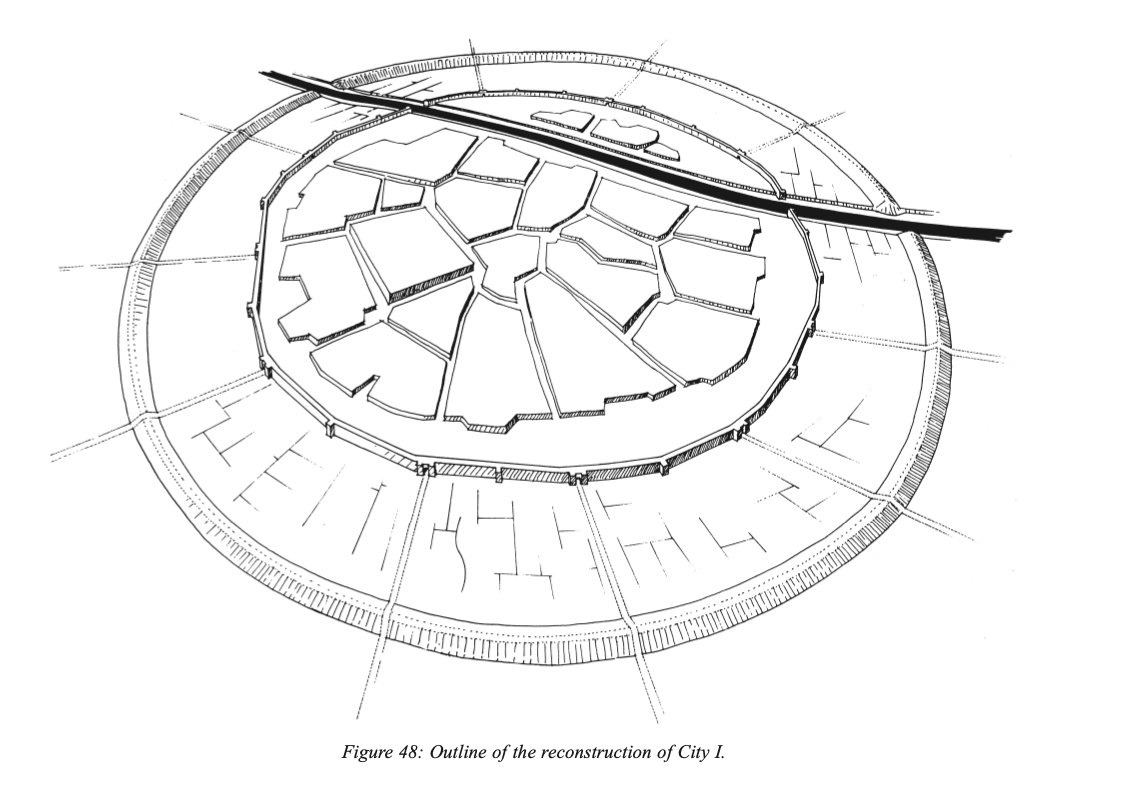
9/ Mari II (ca. 2600 BCE) was rebuilt with enhancements to the hydraulic systems governing the irrigation and canalization of the city. Approximately two centuries after its foundation Mari II was destroyed most probably by the Akkadian ruler Naram-Sin. 
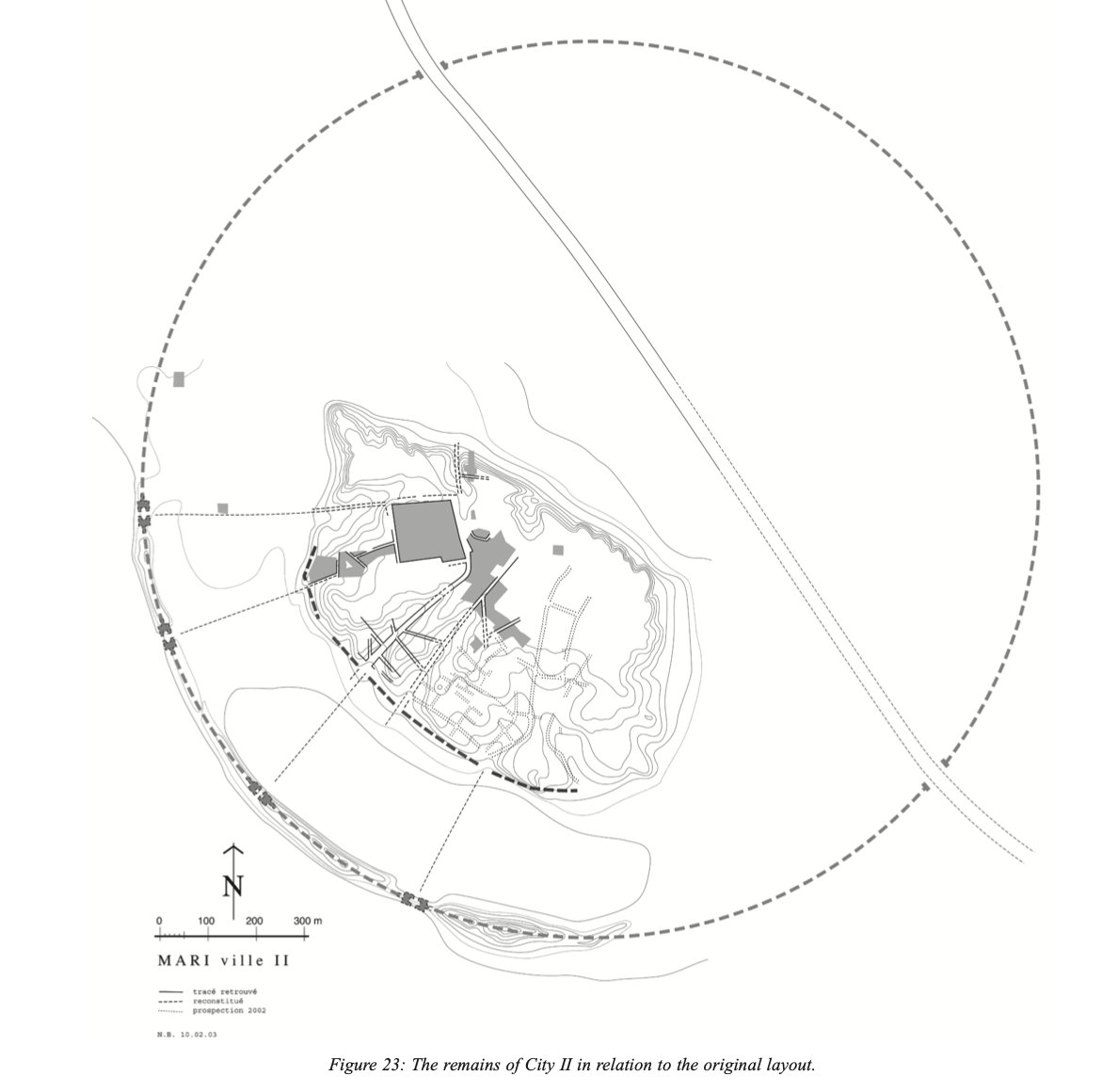
10/ Mari III (ca. 2300 - 1760 BCE) was also reconstructed. It was governed first by the Shakkanakku dynasty, and later by the Amorite kings, of which most famous was the ruler Zimri-Lim, who was defeated by the Babylonian king Hammurabi. Mari never recovered after this. 
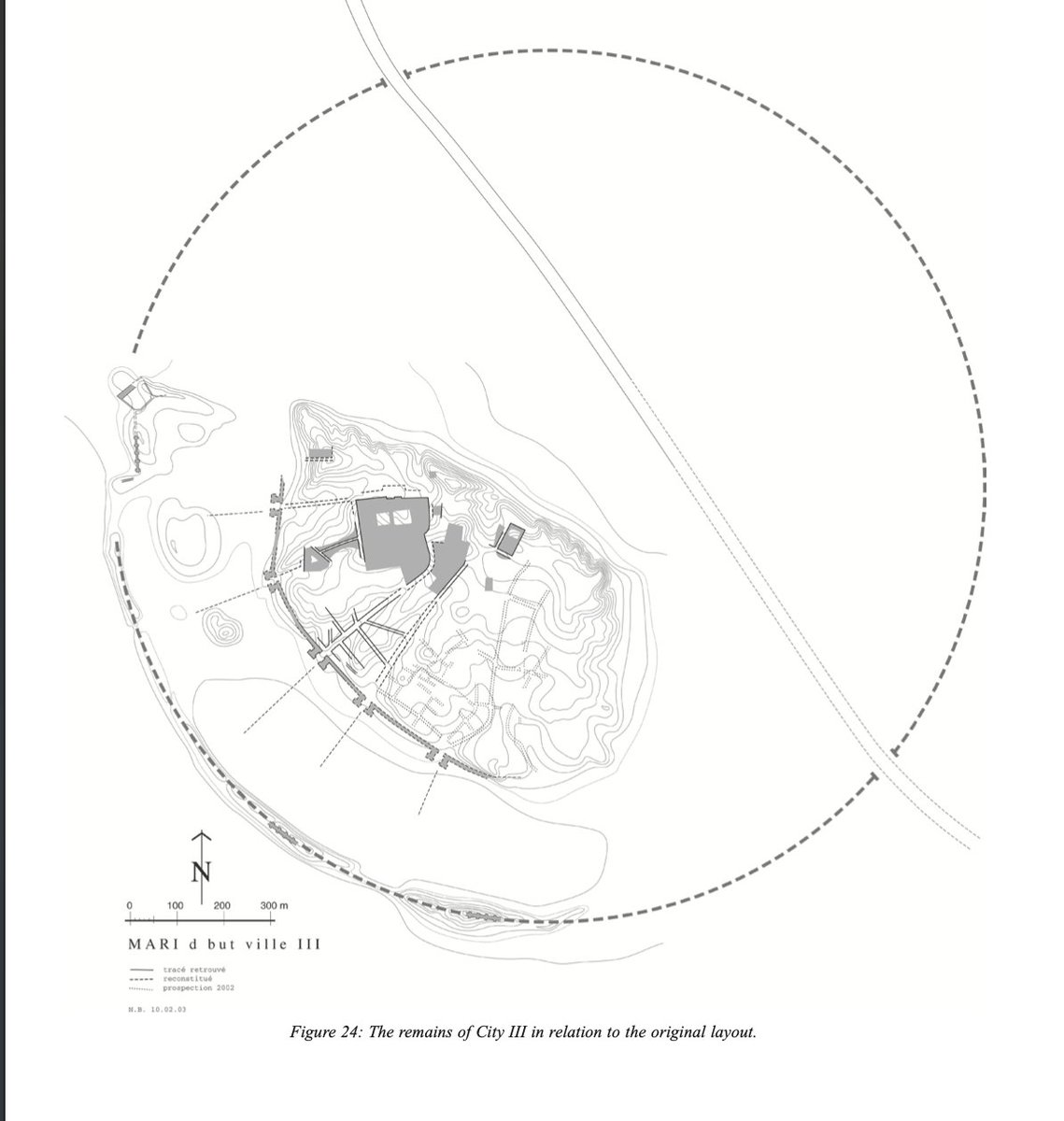
11/ The first striking feature of Mari lays in its concentric circular fortification walls, whose outermost diameter roughly corresponds to 1 km. Right in the middle of these walls lies the religious and administrative sector of the city. 
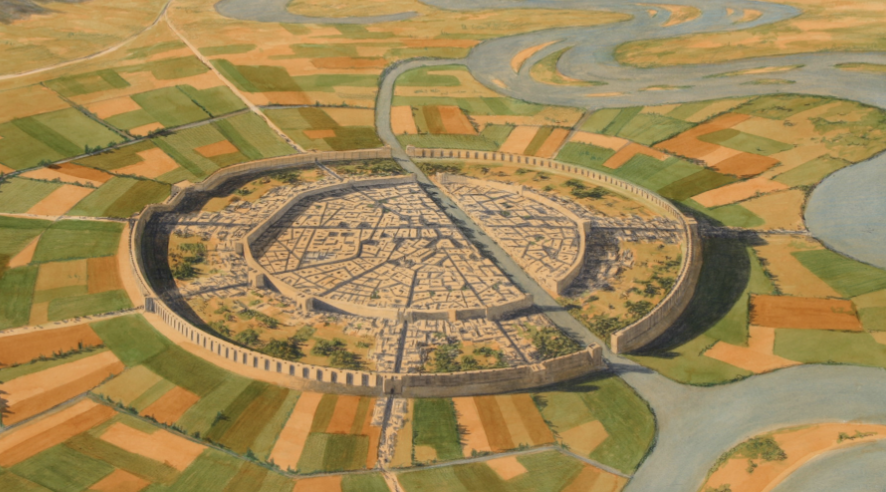
12/ Temples were found almost throughout the entirety of the city of Mari, at least during its phases II and III. However, primary religious buildings were mostly centered in two zones: the Sacred Precinct in the west and the Massif Rouge in the east. 
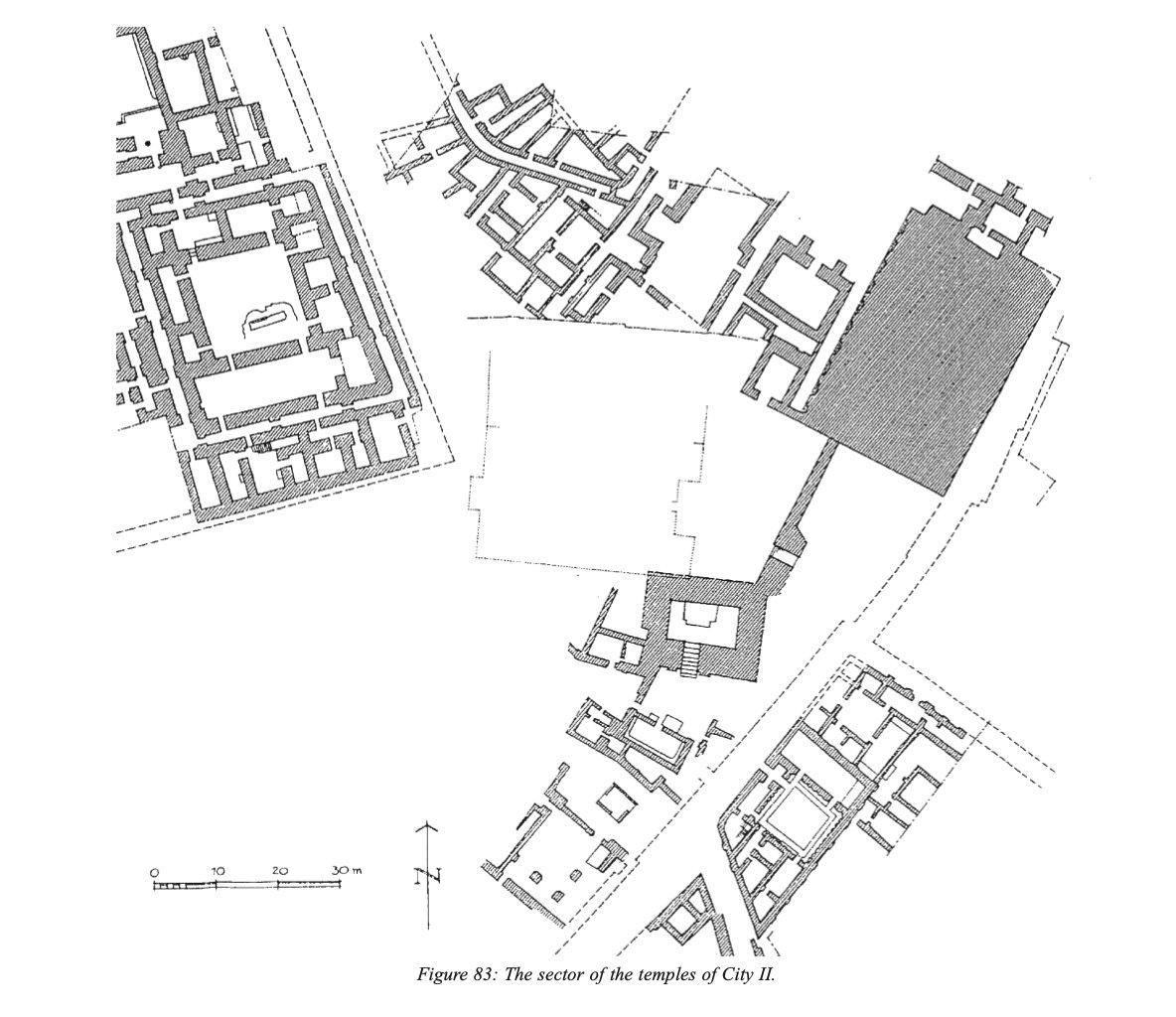
13/ Both were connected by a Sacred pathway across the city. However, some main temples were also discovered on the outskirts of the city, such as a temple of Ishtar, unearthed almost abutting an interior rampart on the edge of the city.
Below: Temple of Ishtar, different phases
Below: Temple of Ishtar, different phases

14/ Margueron notes that such finds "demonstrate that divinities at Mari could have a place in ordinary parts of the city and that their worship was not restricted to a reserved area."
15/ One temple I would like to highlight is the Temple of the Lions, built in the central sacred precinct of divinities during Mari III. According to estimates, this might just be the largest temple of its time in Mari, with walls built at 5-6 meters thick.
16/ It was also built next to an incredibly imposing structure dubbed 'the high terrace', which is 50 x 40 meter large, and has a maximum incline of 5 meters. 
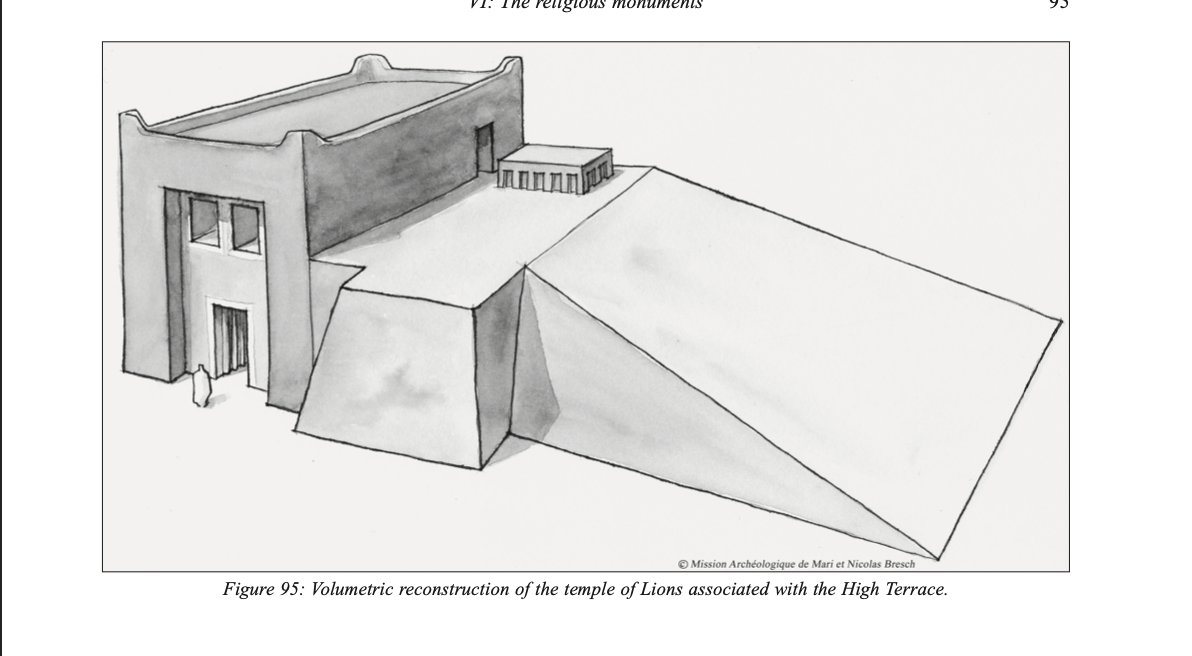
17/ Built in the in-antis style, this temple sported a couple of unusual features: two unique bronze lion protomes set in the interior of the temple close to a platform facing its entrance.
Below: one of the two lions upon discovery
Below: one of the two lions upon discovery
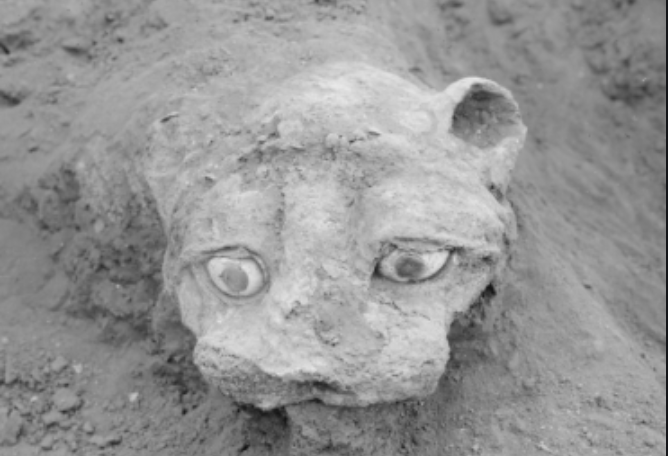
18/ I've met one of these beautiful creatures at the Louvre, and was astonished at their monumental size. Both lions are in fact made of a wooden core, and coated with a sheet of hammered bronze that was set into the wood by nails. 
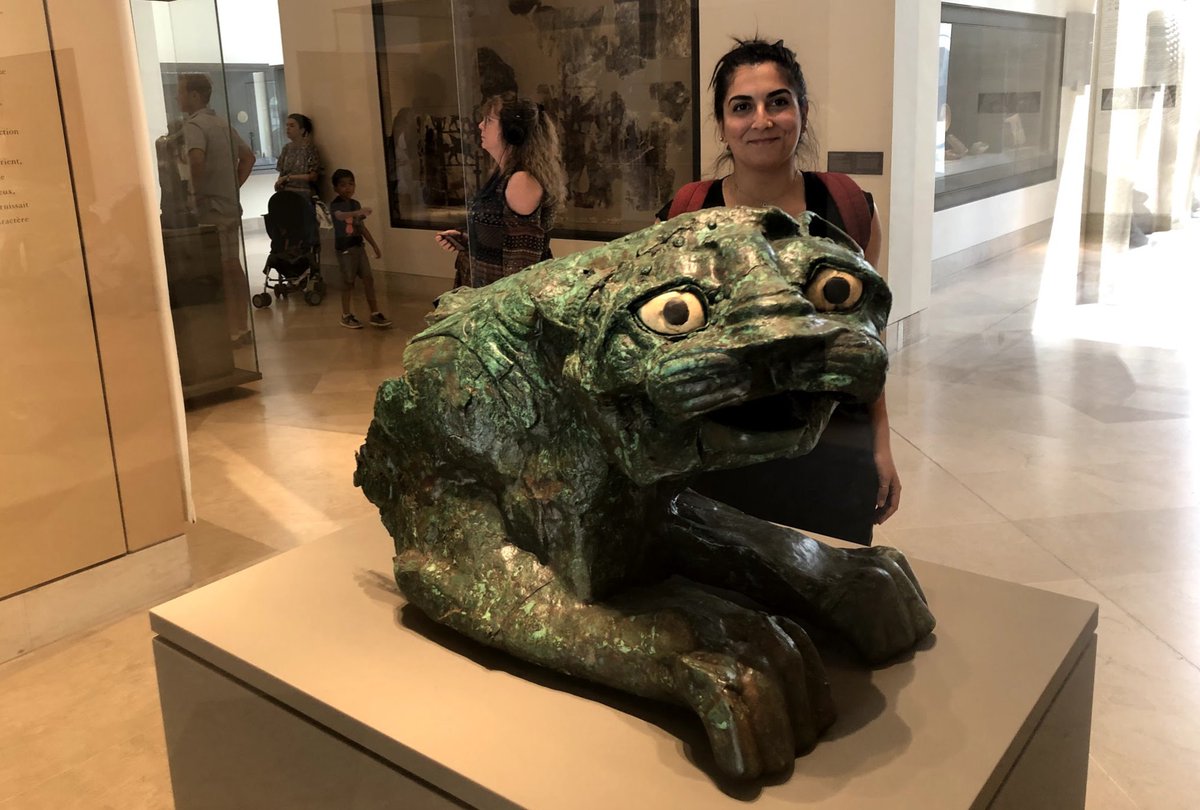
19/ While defaced from having been crushed underneath the debris of the temple, their beautiful details and incredible inlayed eyes have been preserved. It seems that both lions were portrayed with one of their paws slightly lifted, as if at the commencement of movement.
1&2👇

1&2👇

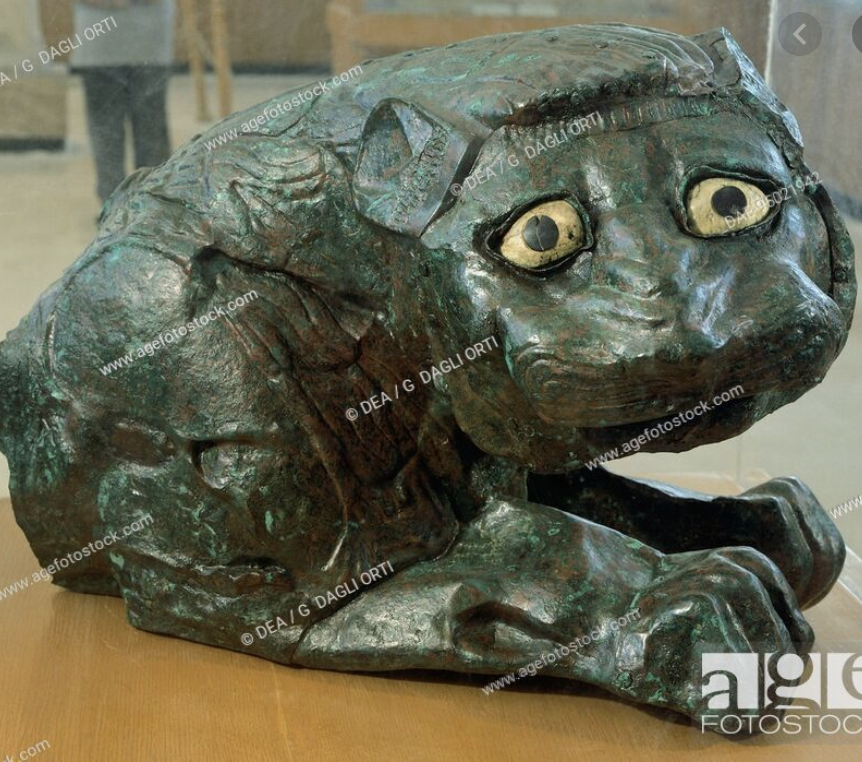
20/ Three foundation inscriptions hidden in the corner tiles of the temple mention that Ishtup-Ilu, Shakkanaku of Mari, had built the temple. However, no divinity has been attributed to it as of yet. 
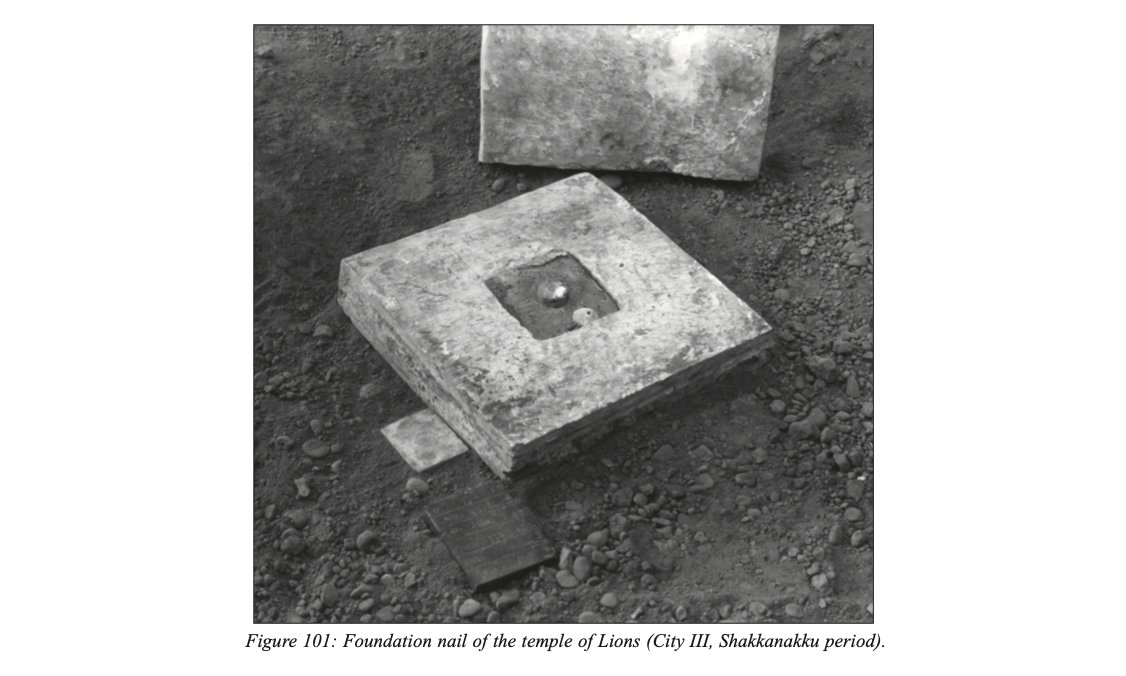
21/ Mari also sported a large number of palaces, as well as its own palace precinct. However, one cannot speak of Mari without highlighting its most famous structure: the Great Royal Palace of Mari. It's an exemplar of Amorite architecture + Bronze Age palatial structure. 
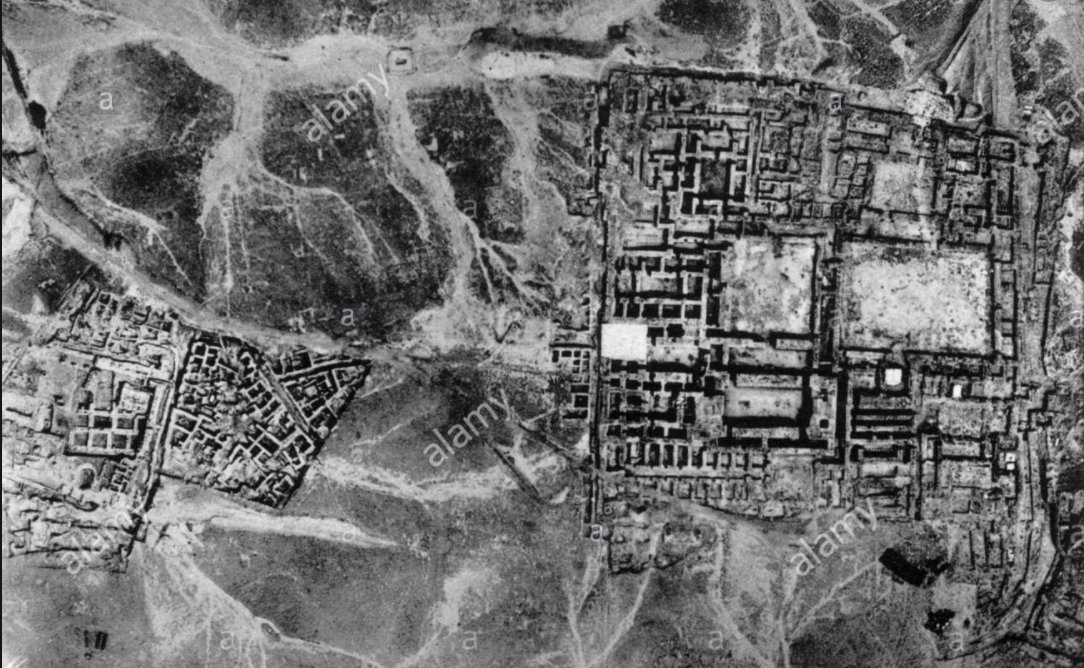
22/ The palace is roughly rectangular in shape, and measures approx. 180 x 130 m, taking over 2.3 ha. in space. Thought to have been built in around 2000 BCE, the palace was not used for long before its destruction by Hammurabi in 1760 BCE, lasting around 2.5 centuries. 

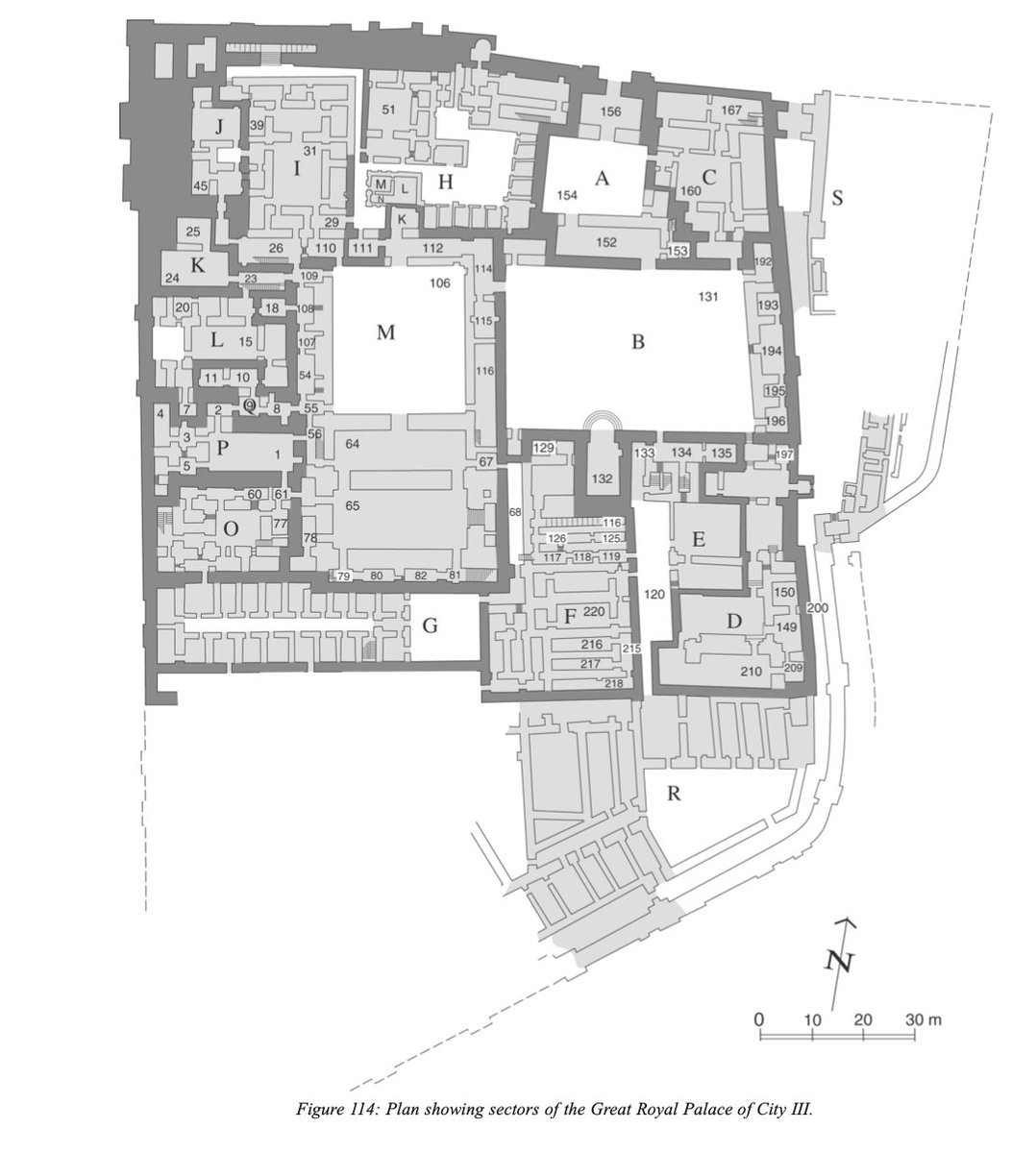
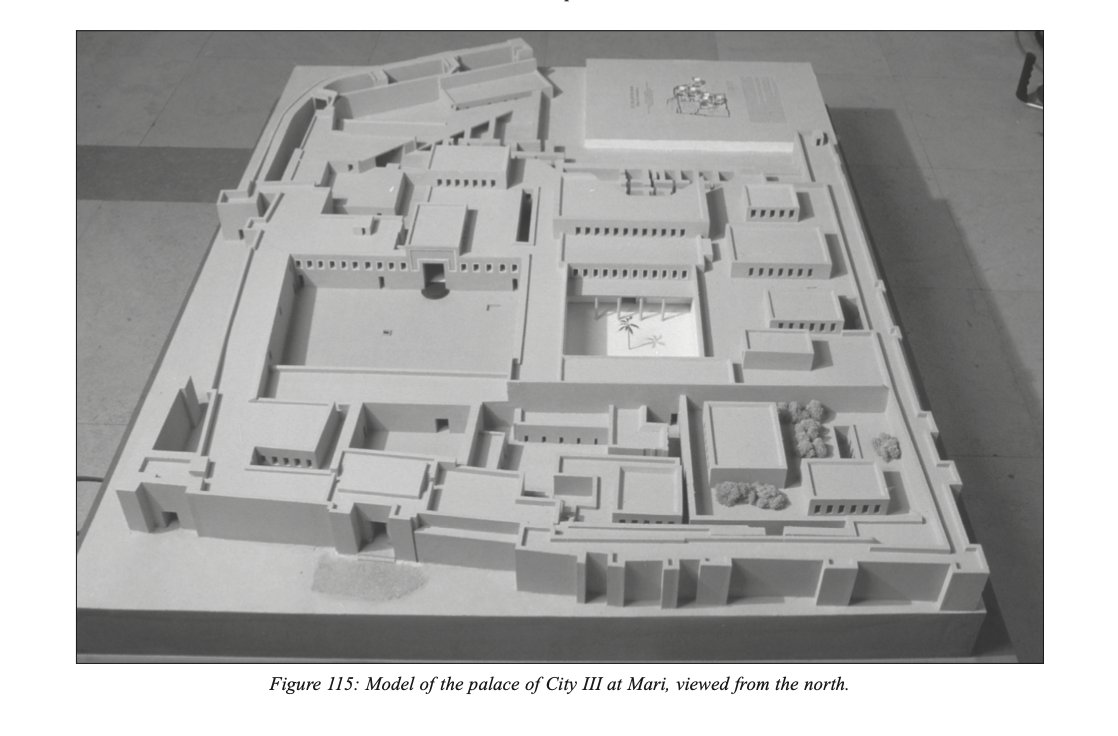
23/ Thought to have included a second story, the Great Palace also was an administrative center, since many tablets were discovered in it. However, my highlights for this palace will be in its amazingly preserved paintings:
24/ The Ishtar Chapel Painting
This mesmerizing painting was found in many fragments in the Royal Palace of Mari, specifically in a chapel dedicated to the goddess Ishtar, and dates back to the time of its construction ca. 2000 BCE.
This mesmerizing painting was found in many fragments in the Royal Palace of Mari, specifically in a chapel dedicated to the goddess Ishtar, and dates back to the time of its construction ca. 2000 BCE.
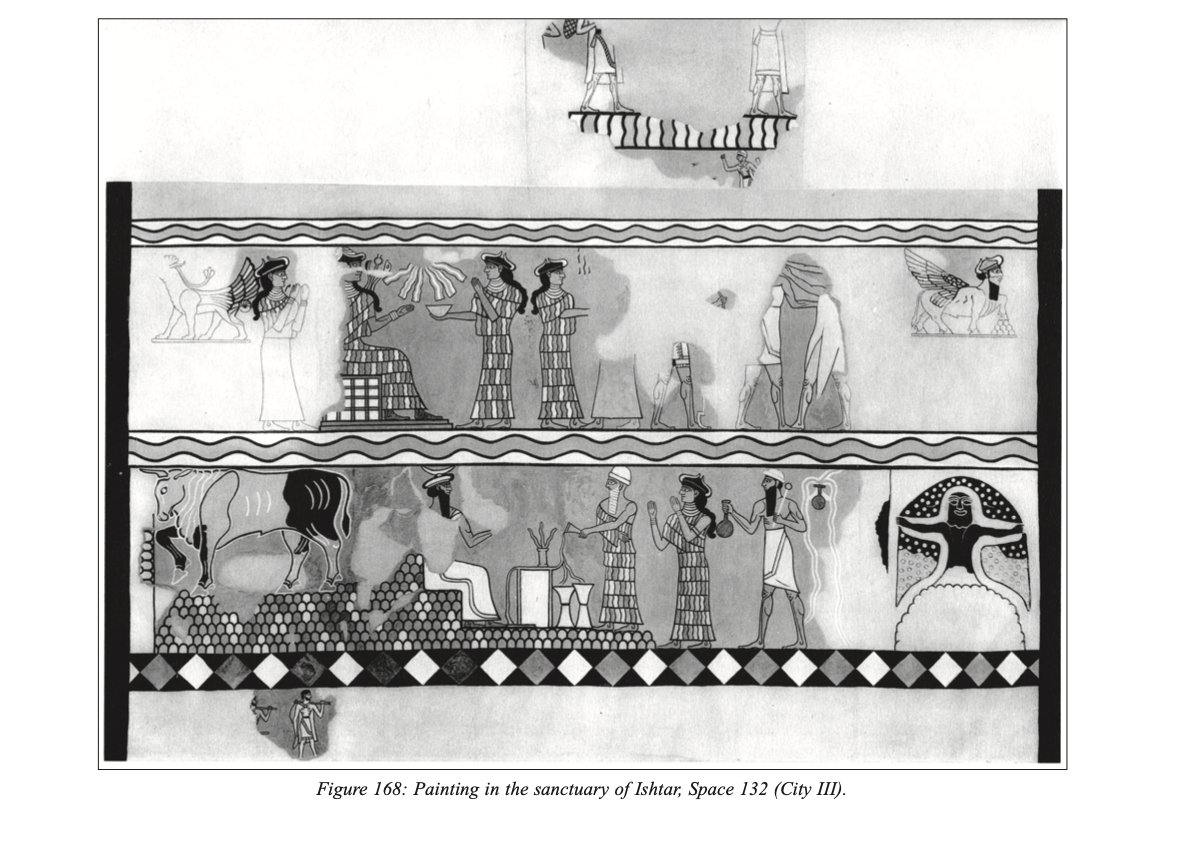
25/ The most important scenes in this painting are that of the goddess Ishtar enthroned in a presentation scene (upper register), and that of the god Sin accepting a libation and sacrifice. 
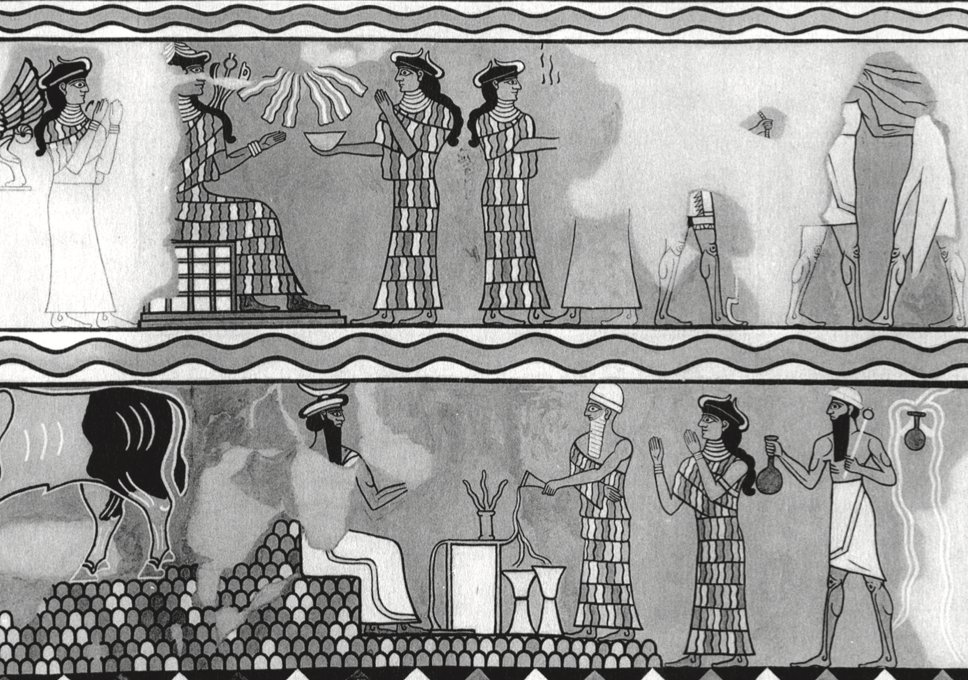
26/ But there are other features of this painting that have not been reconstructed with much certainty regarding their placement, such as the griffin and bullman, as well as a creepy (or cute?) black figure surrounded by a starry night at the bottom right of the painting. 


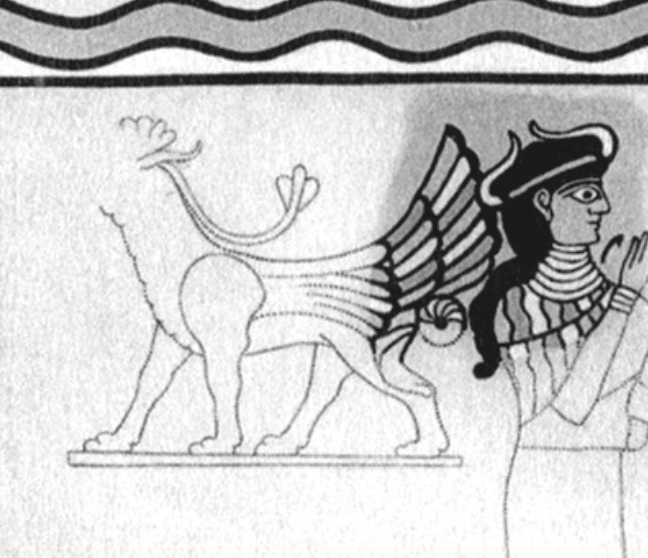
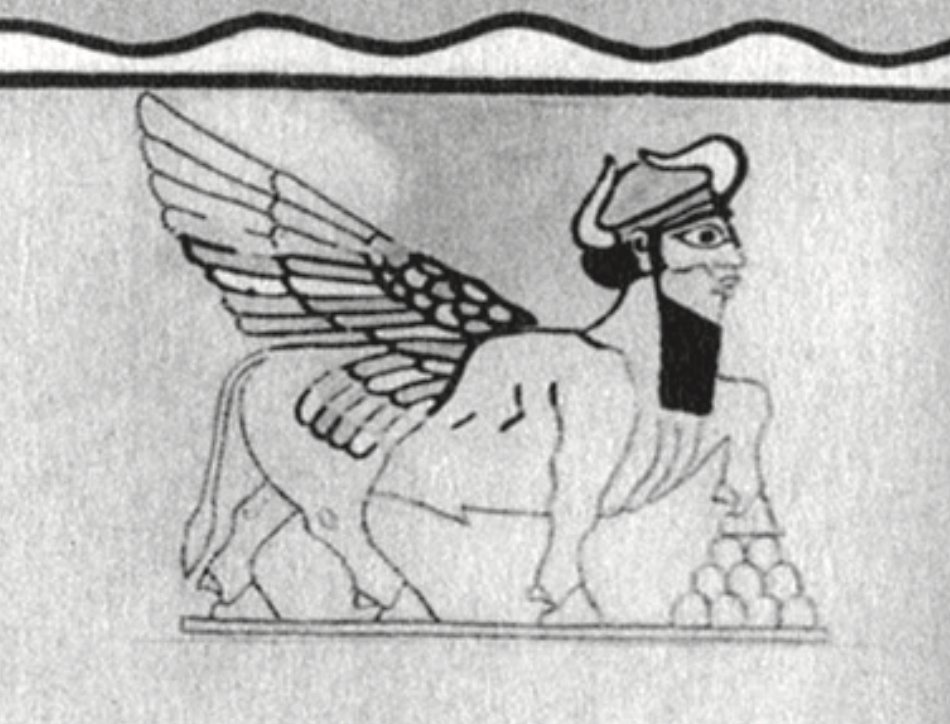
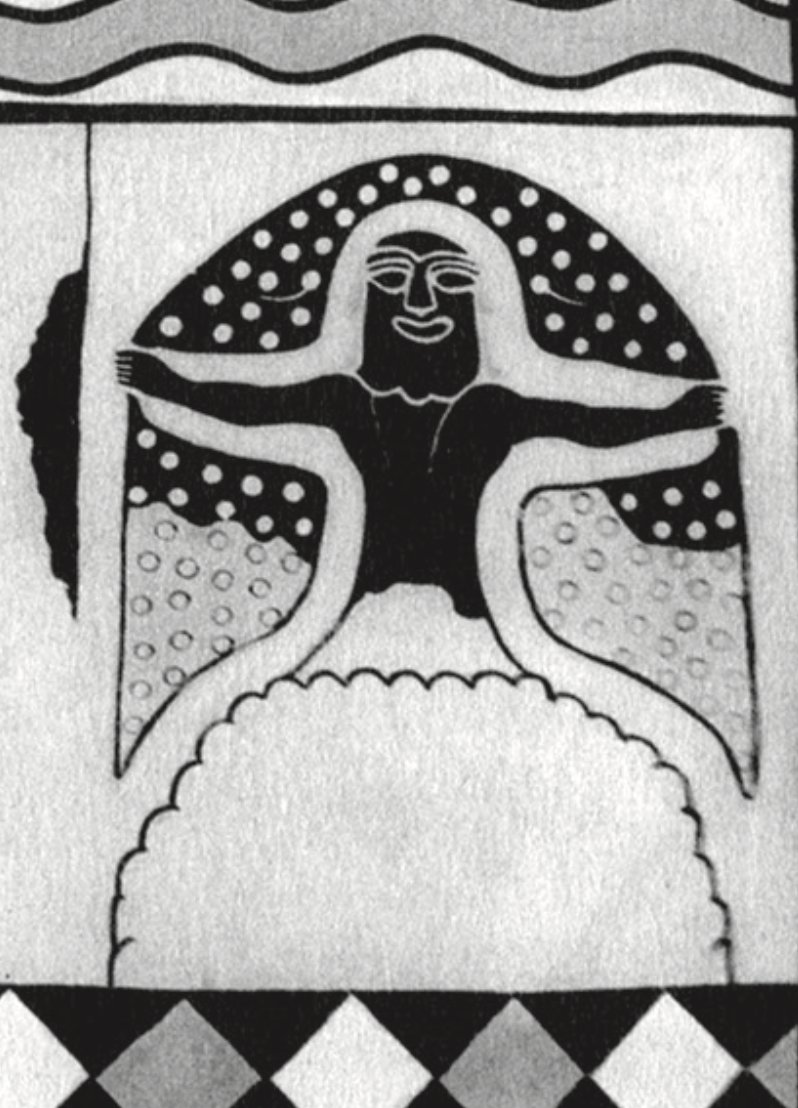
27/ The most famous painting at the Palace of Mari is that of the Investiture, measuring at 2.5 m long by 1.65 m high. The subject of the painting mainly focuses on an encounter between goddess Lama and the king, as well as a cascading scene of trees and animals intermingling. 
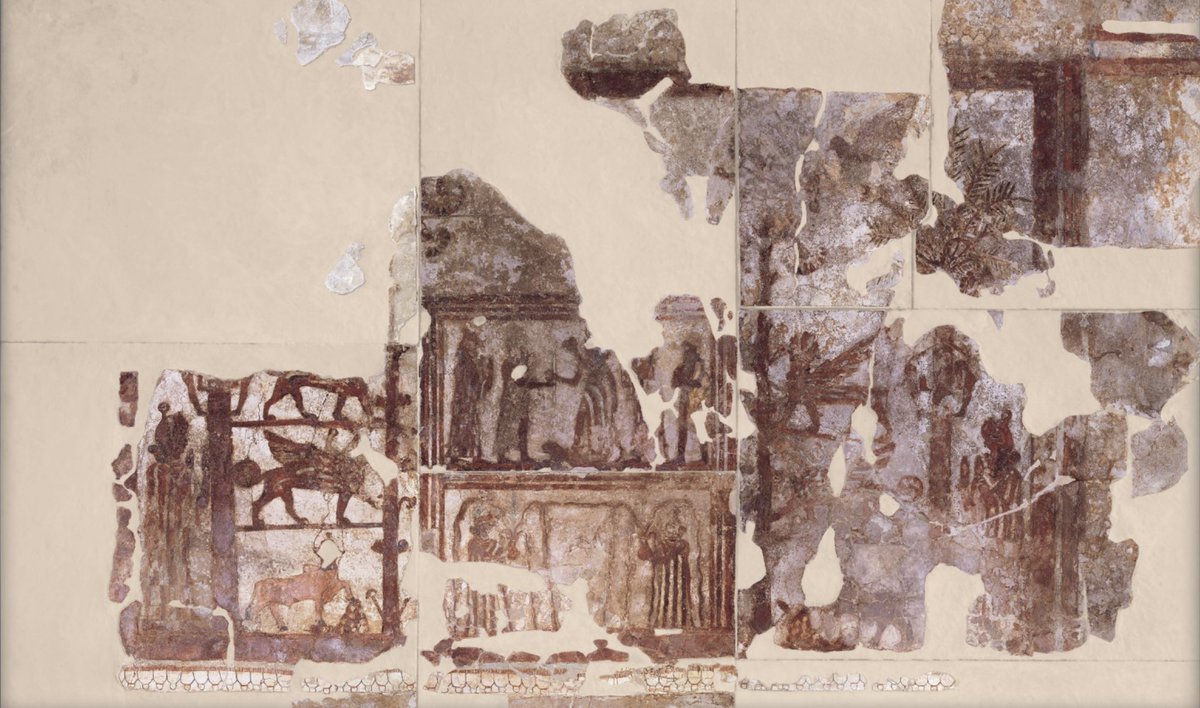
28/ Now, the fantastic aspect of this painting is not only in its subject matter, but in the incredible play on perspective that the artist seems to have partaken. The scene itself is meant to be what a viewer would see once s/he enters the throne room of the palace, (...)
29/ (...) the two 'rooms' placed atop one another in reality would be leading into one another. The largest 'border' framing the scene would be the open courtyard leading into these rooms. Indeed an ingenious composition of its time. Spectacular! The pic below better clarifies: 
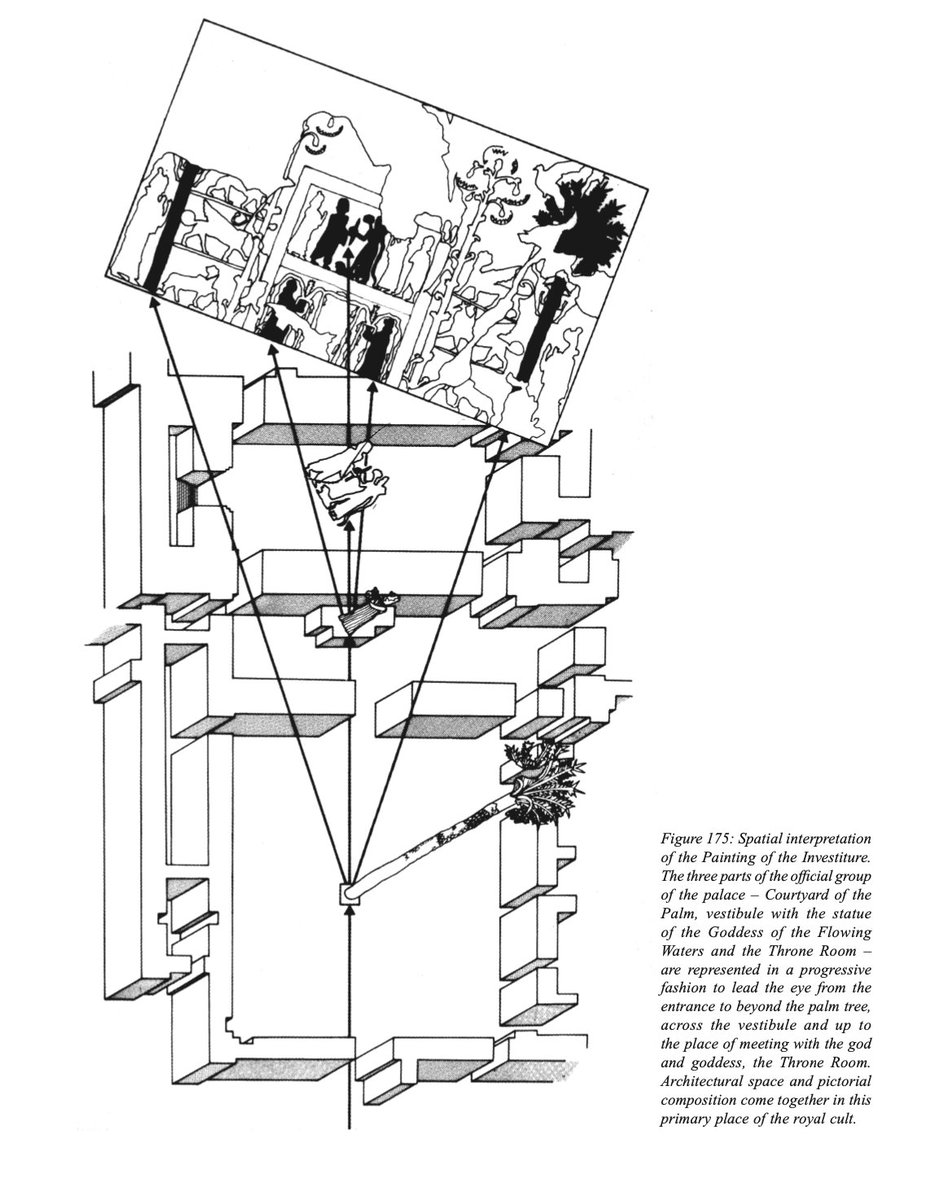
30/ In Margueron's words: "The Painting of the Investiture is certainly the richest pictorial work of all those brought to light by Near Eastern archaeology so far. It would even appear to be the first modern painted work in history."
Below: drawing of the Investiture painting
Below: drawing of the Investiture painting
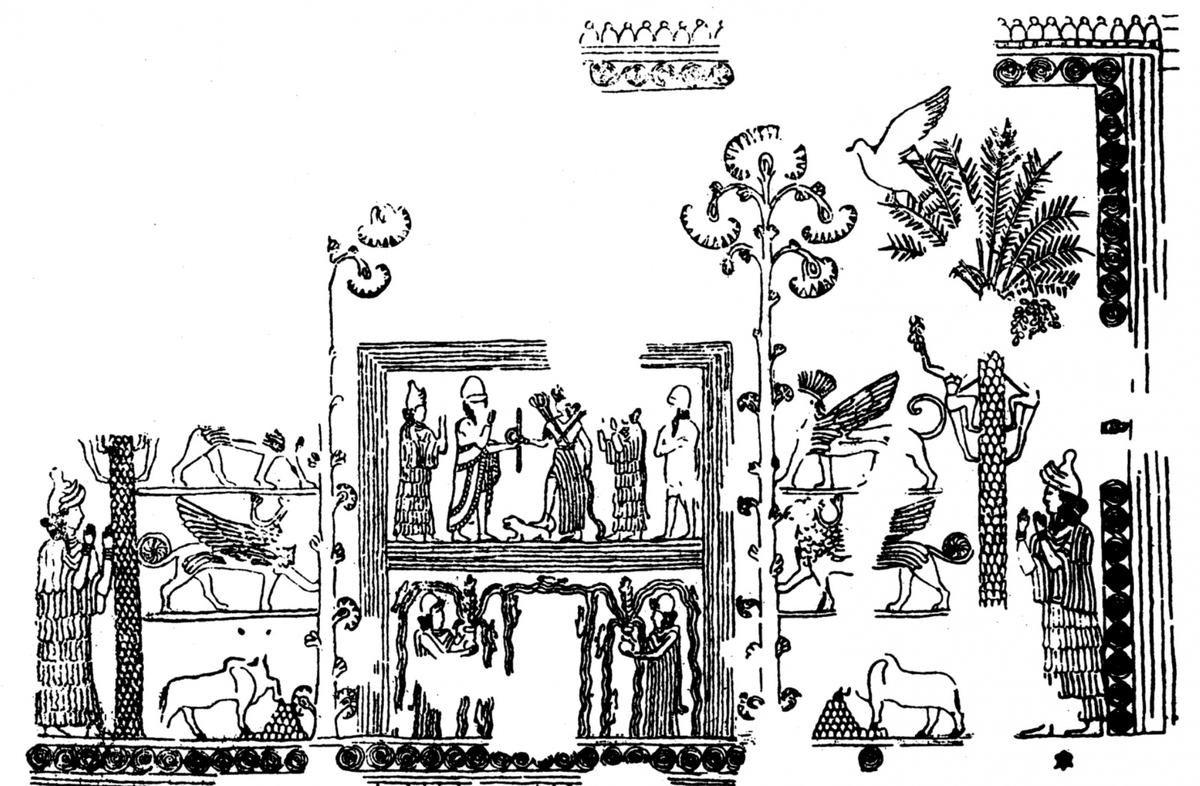
31/ Other pieces of inlay, sculpture, relief and painting were also unearthed in the palace quarters, and though I cannot describe all of the here, I've added their photos below. Hit me up if you'd like to know more about a specific piece! 

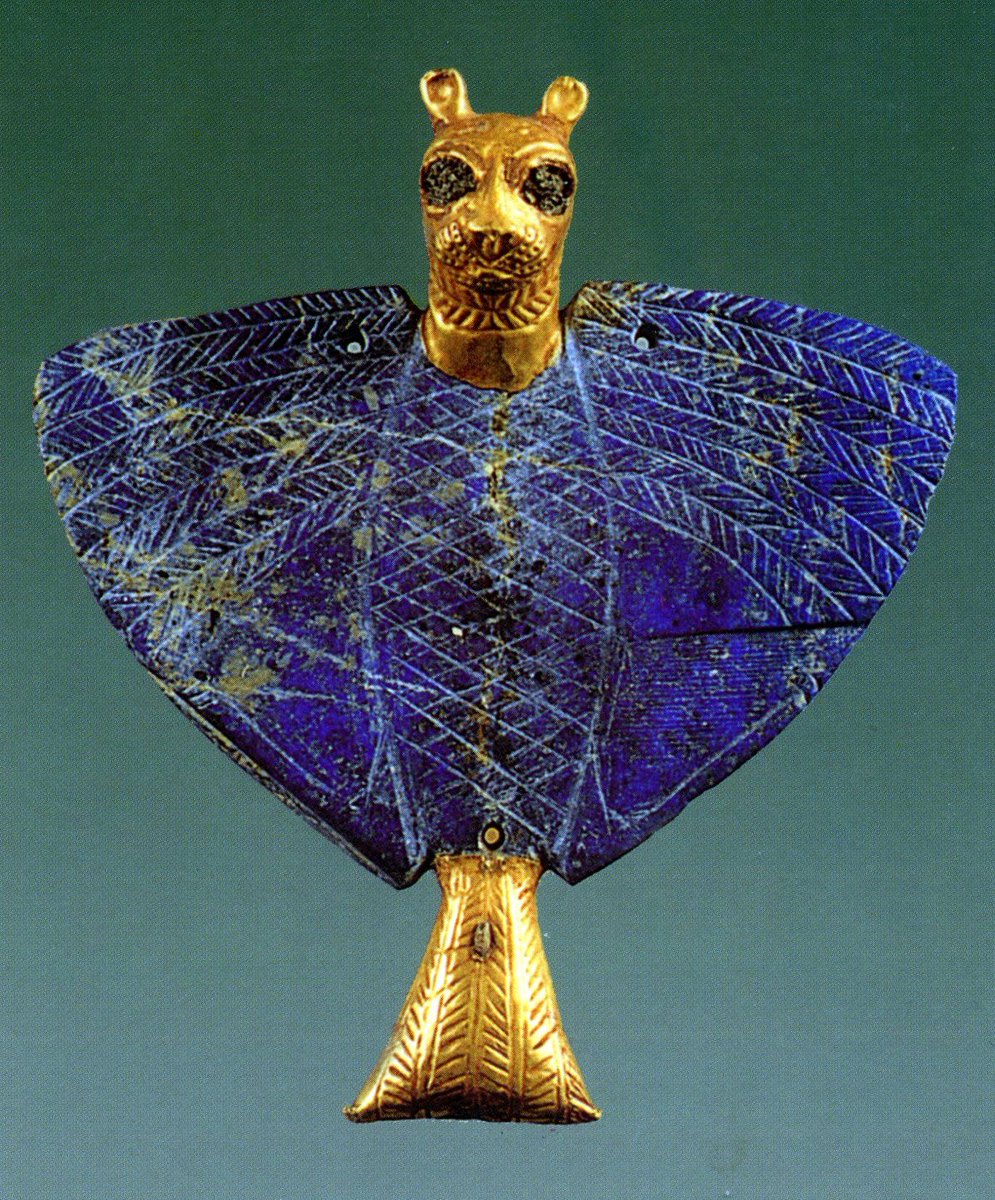
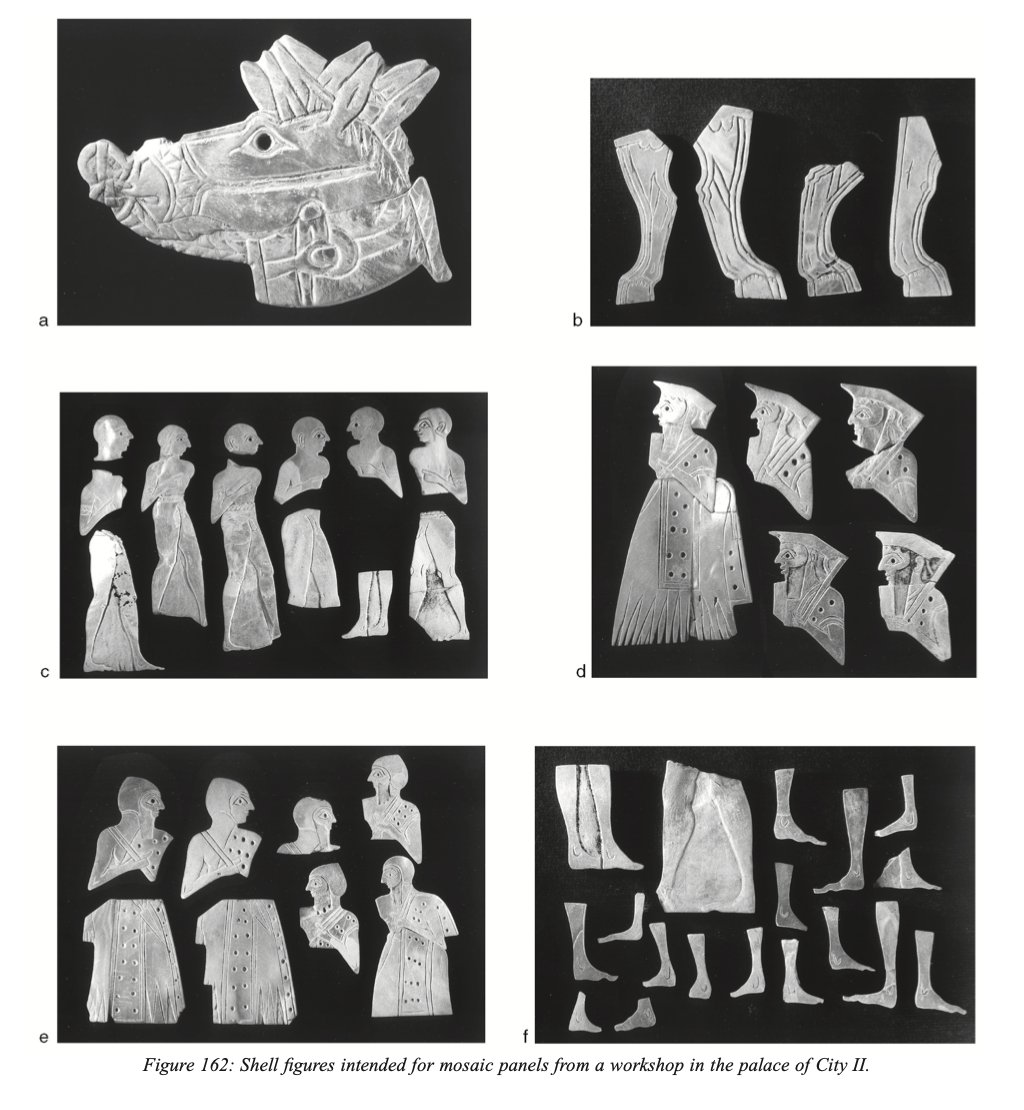
By the advent of the Syria crisis in 2011, reports of massive looting and destruction were perpetuated with regards to its most important sites. Mari, unfortunately, fell in this lineup of destroyed sites. Below is a before and after shot of the main palace area. 
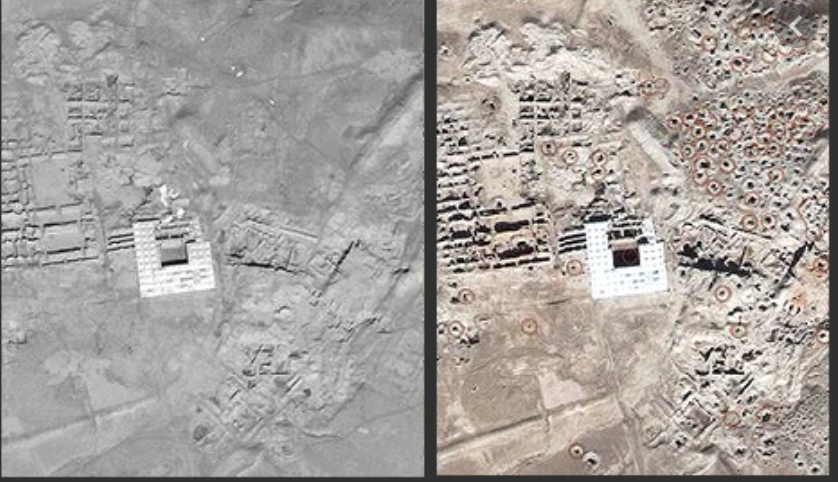
My intention was to shed light on the glory of this unique ancient Syro-Mesopotamian kingdom by showcasing its history, features and findings.
Last but not least, the references:
Margueron, 2014. MARI CAPITAL OF NORTHERN MESOPOTAMIA IN THE THIRD MILLENNIUM BC; The archaeology of Tell Hariri on the Euphrates.
Also check the Mari website: archeologie.culture.fr/mari/fr
Margueron, 2014. MARI CAPITAL OF NORTHERN MESOPOTAMIA IN THE THIRD MILLENNIUM BC; The archaeology of Tell Hariri on the Euphrates.
Also check the Mari website: archeologie.culture.fr/mari/fr
• • •
Missing some Tweet in this thread? You can try to
force a refresh
